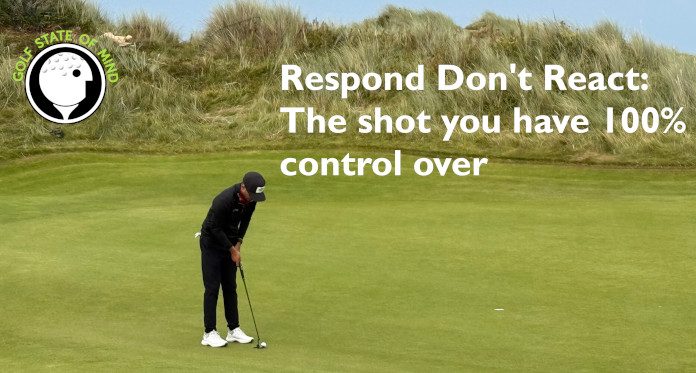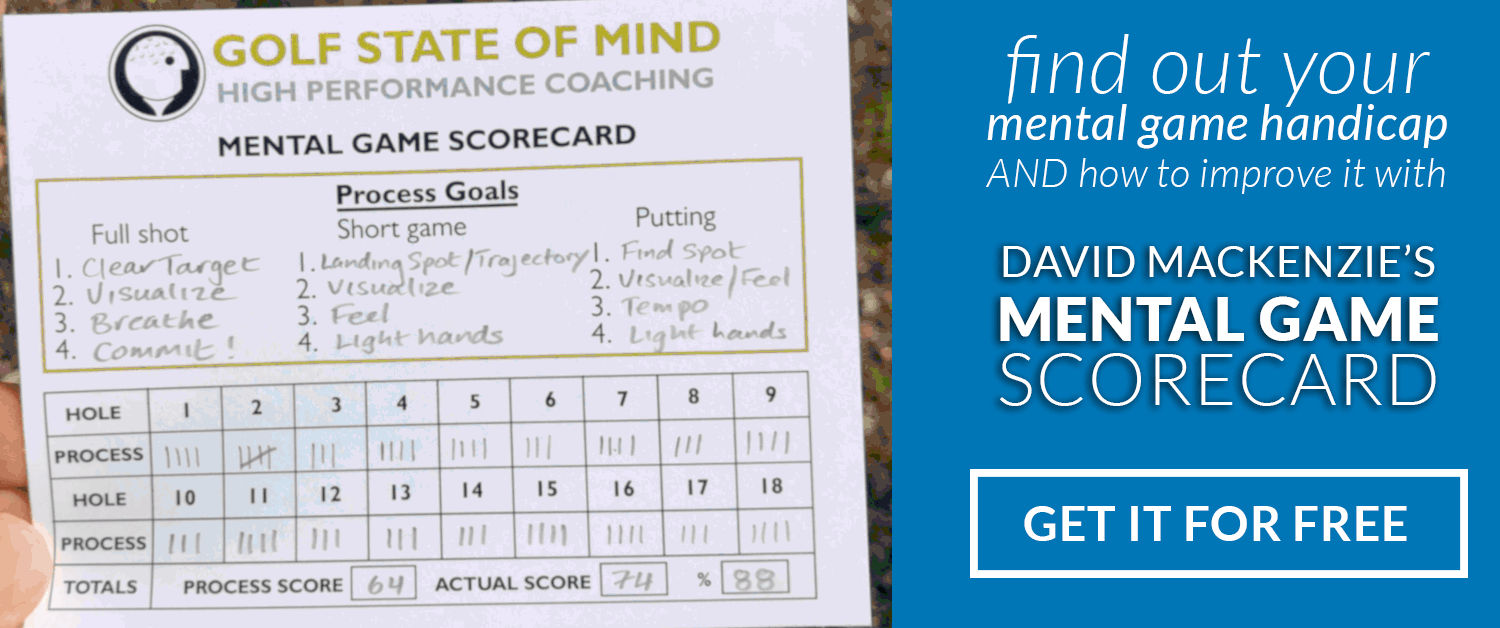
Respond don’t react: The Shot You Can Always Control
Respond don’t react: The Shot You Can Always Control
You can’t control bad bounces or missed putts but you can control your response. Here’s how to turn reaction into resilience.
Pressure, setbacks, and unforeseen outcomes are built into any round of golf. A bad bounce, an opponent’s good fortune and careless mistakes can happen at any time. In fact, the unpredictable nature of the game is one of its main attractions. But what separates those who succeed from those who spiral isn’t what happens on the course, but how they respond to it.
Most people react. Their emotions take over, words or actions spill out before thought, and suddenly the situation feels worse than it started. A reaction is impulsive, driven by adrenaline, ego and an attitude that golf should be fair and we should get everything we deserve.
High performers learn how to respond. A response is possible when you create space, even if just for a breath, between what happened and what you choose to do about it. It’s deliberate, rooted in awareness rather than impulse. Where reaction narrows your options, response expands them.
Soften Emotion Before It Starts
You can’t stop yourself from feeling emotion, but you can reduce its grip by adopting two simple perspectives before you play:
- Expect nothing and Accept everything. Anything can happen — a birdie, a bogey, and a bad bounce. Accepting this reality before and during the round takes away the shock and softens the sting when it shows up.
- Separate your Personal Identity from your results. A shot is just a shot, not a judgment on who you are. When you stop tying your self-worth to performance, frustration and disappointment lose their power.
With these perspectives in place, emotions still arise but they feel lighter. This creates more space, making it easier to respond instead of react.
Why Reacting Costs You
When you react, you give your control away. Your mood, your focus, and often your performance gets dictated by circumstance. It feels powerful in the moment – snapping back, complaining, and making it clear that it doesn’t normally happen that way, that you are better. But the reality is that it takes you further away from an internal state of peace and optimism where your best performances originate.
Think about three common scenarios:
- You lip out a short putt. A reaction might be slamming the putter, muttering under your breath, and dragging frustration to the next tee.
- You block a tee shot into the trees. A reaction is trying to pull off a miracle recovery, only to make double bogey instead of taking your medicine.
- You play a solid hole and make a par, but your opponent chips in for birdie. A reaction is stewing about bad luck instead of accepting and getting ready for the next hole.
In every case, reacting not only drains energy, it multiplies the damage.
Why Responding Builds Power
Responding puts you back in the driver’s seat. By choosing your response, you shift attention to what you can influence: your body language, your breath, your next move. This doesn’t make the setback disappear, but it ensures it doesn’t spread.
We see this clearly in the best players in the world. Watch closely after they miss a fairway or three-putt: the deep breath, the strong body language, the reset as they walk to the next shot. That composure isn’t an accident, it’s a trained skill. And it’s available to you, too.
How to Train It
Building the habit of responding instead of reacting takes practice. Here are five ways to develop it:
- Pause before you act. One breath is enough to break the chain of automatic reaction. Try it after every shot, good or bad.
- Name what’s happening. “I feel frustrated.” Labeling the emotion reduces its hold.
- Choose the next best action. Ask: “What response moves me forward here?” What’s Important Now (W.I.N.) Sometimes it’s a safe punch-out. Sometimes it’s just a smile.
- Practice away from the course. Bad traffic, technology glitches, missed putts — every irritation is a chance to train your response muscle and composure.
- Train with mindfulness meditation. Just 5–10 minutes a day of sitting quietly and noticing your breath is powerful mental training. Your mind will try to wander, but by noticing and bringing your attention back to the breath, you increase awareness and your ability to not be controlled by your thoughts and emotions.
- Fully surrender to the outcome. We do not know what will happen in your next round. Before you play, accept this and tell yourself that you will take a moment, notice and respond to all outcomes, especially those that are unfavorable.
Why This Matters Beyond the Game
Golf isn’t just about what you achieve, it’s about what it teaches you about yourself and how you can grow as a person. Every round presents moments of choice: will you react impulsively, or will you respond with clarity? These small windows shape more than just your scorecard.
Each time you choose to respond instead of react, you train yourself to break free from old negative patterns. You prove that you’re capable of doing difficult things: staying calm when you want to snap, staying present when your mind wants to spiral. Over time, this practice builds resilience and more success. You don’t just become a better golfer, you become a better person.
And the benefits travel far beyond the course. The same pause that helps you recover from a double bogey can help you handle a tough meeting at work or a disagreement at home. The calm you cultivate under pressure in golf shows up everywhere life challenges you.
The lessons from golf can teach us the lessons of life: setbacks are inevitable, but they don’t have to control you. When you learn to respond, you grow into a winner.


